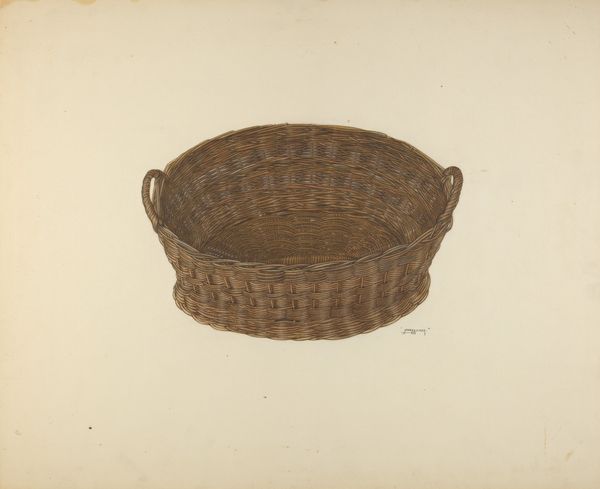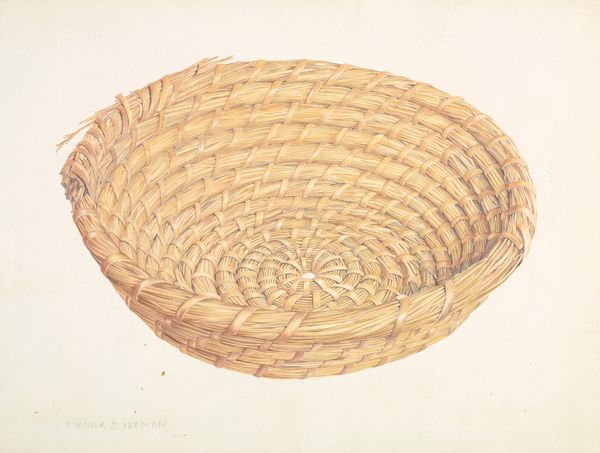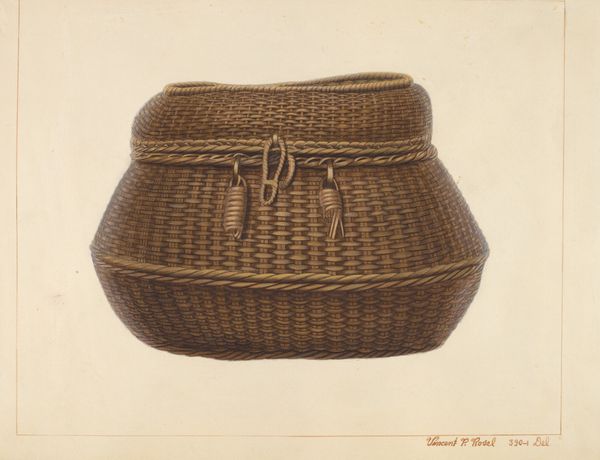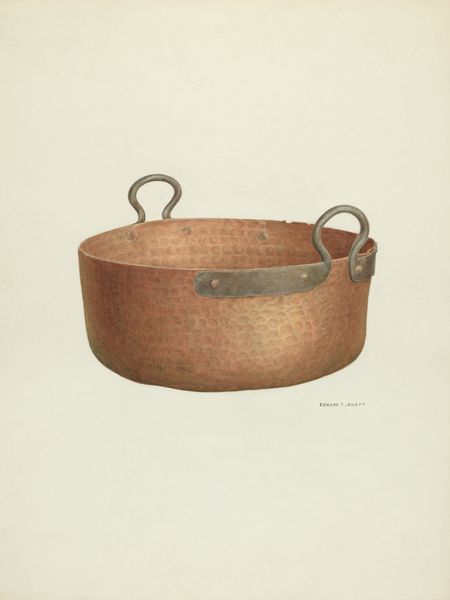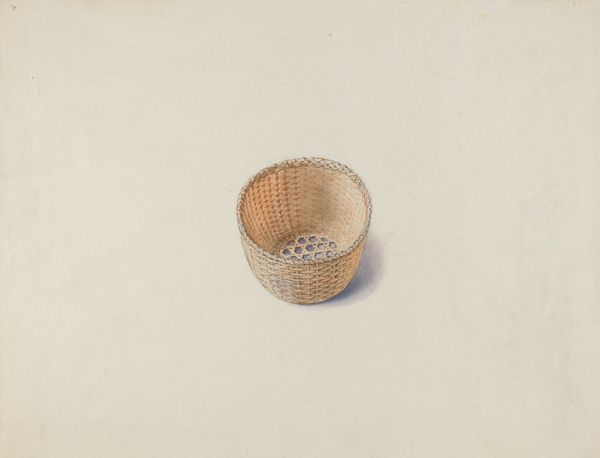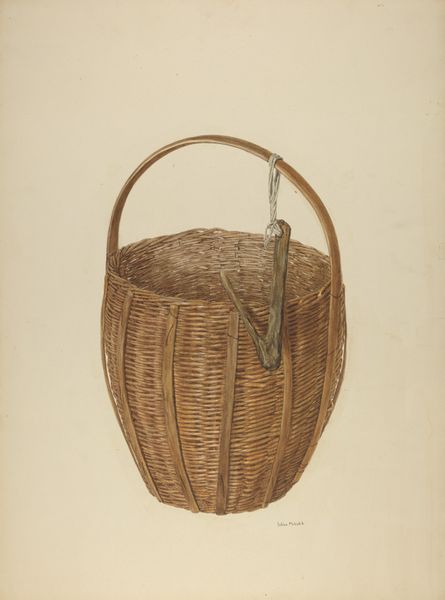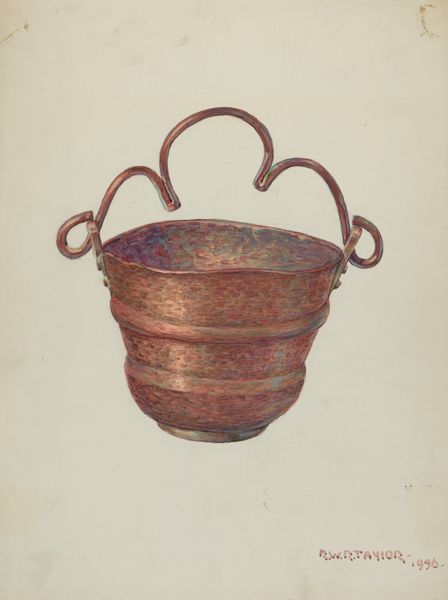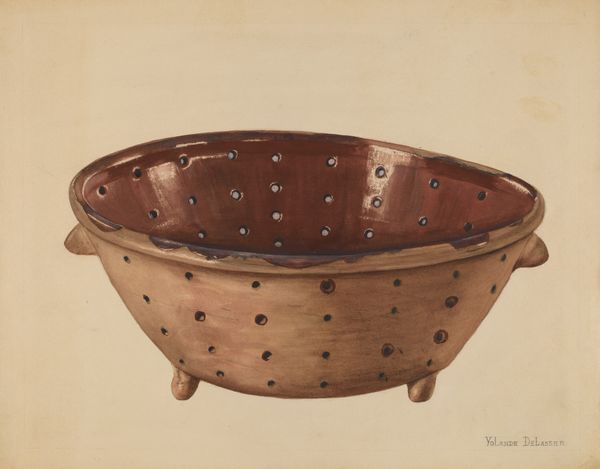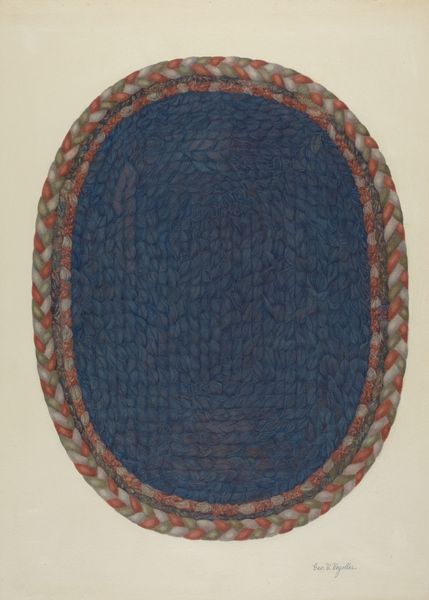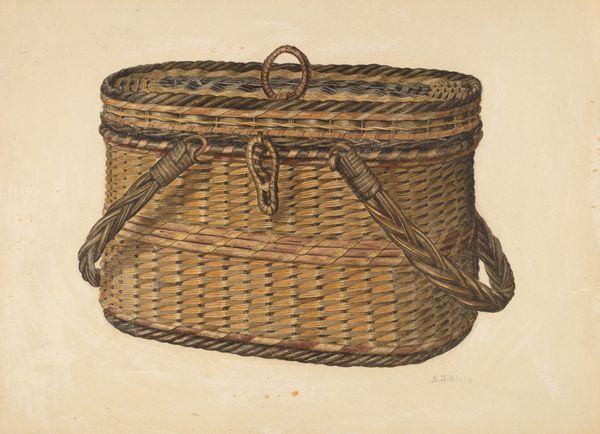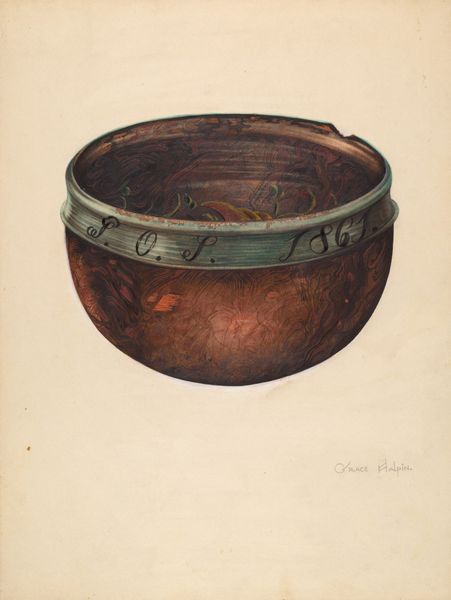
drawing, watercolor
#
drawing
#
watercolor
#
watercolour illustration
#
watercolor
Dimensions: overall: 21.6 x 29.3 cm (8 1/2 x 11 9/16 in.) Original IAD Object: 5 3/8" high; 13 1/2" in diameter
Copyright: National Gallery of Art: CC0 1.0
Editor: So here we have E. Allen Fritz’s watercolor and drawing, "Hickory Bark and Oat Straw Basket," dating back to around 1940. It’s interesting how a functional object becomes art through depiction. What do you see in this piece that strikes you? Curator: Immediately, I'm drawn to the way Fritz renders these materials. It begs the question: why watercolor and drawing to depict a woven basket made of hickory bark and oat straw? What kind of labor went into constructing the original basket, and how does that relate to the labor involved in creating this representation? Editor: That’s a cool point. The detail suggests considerable time spent replicating the basket’s texture. Was this kind of detailed documentation of everyday objects common during this time? Curator: Yes, there was a fascinating movement looking at everyday items in new ways, elevating craft. The artist meticulously illustrates the texture and pattern, yet doesn't actually *make* the basket. Think about the cultural context: the mass production that was happening in the 40s; does the work become a counterpoint, an elegy, even, to handmade processes that were disappearing? Editor: That's a very powerful way to read the image; the act of drawing becomes a kind of preservation. Almost like a photograph, but far more labour-intensive. It's interesting to think about it as a commentary on industrialization through the focus on handcrafted techniques. Curator: Precisely! And by using art supplies associated with “high art” to document and, thus, honor functional and beautiful craftsmanship challenges the traditional hierarchy. It prompts a deeper investigation into labor, materiality, and cultural values. Editor: This makes me appreciate the artist's perspective much more. I came in seeing it as a nice representation, but I’m now thinking about broader implications of material culture and artistic representation. Thank you for this insight! Curator: And thank you for your thoughts – looking at the intersections of artistic skill, cultural shift, and how labor is valued always yields rich interpretations.
Comments
No comments
Be the first to comment and join the conversation on the ultimate creative platform.
